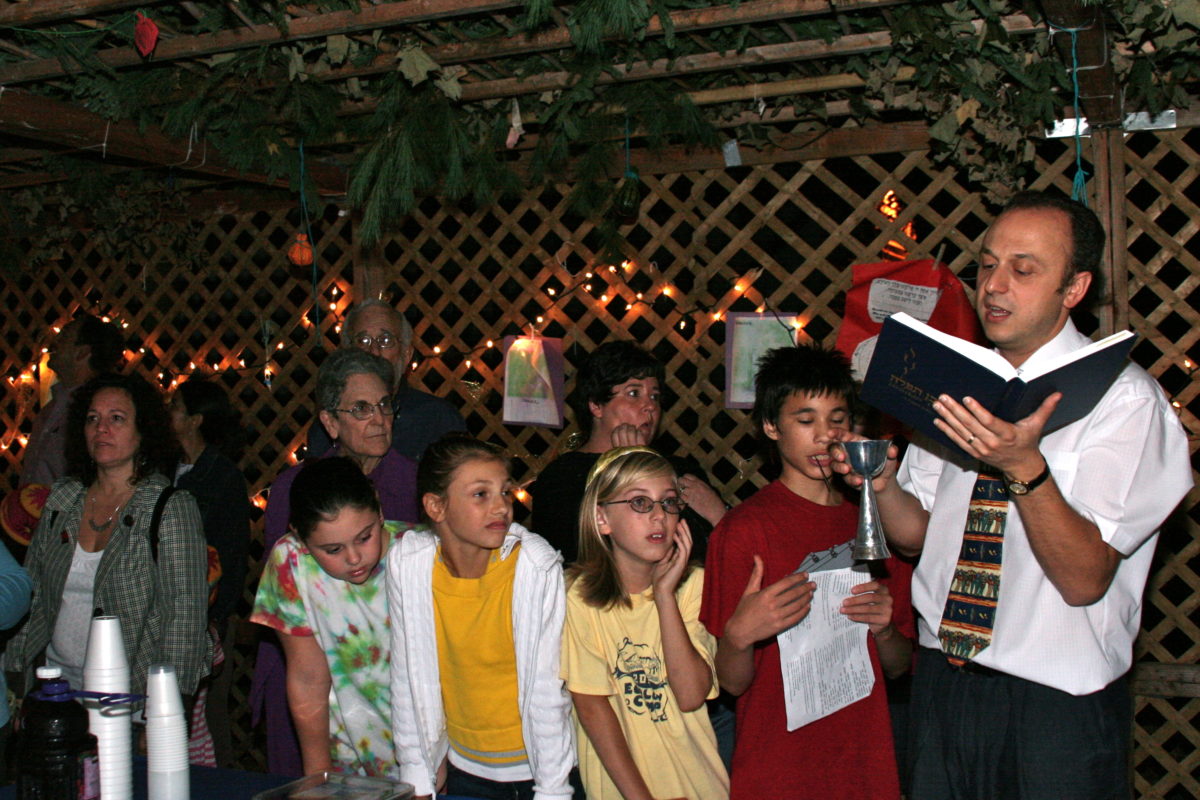 ולקחתם לכם ביום הראשון פרי עץ הדר כפת תמרים וענף עץ עבת וערבי נחל ושמחתם לפני ה׳ אלקיכם שבעת ימים
ולקחתם לכם ביום הראשון פרי עץ הדר כפת תמרים וענף עץ עבת וערבי נחל ושמחתם לפני ה׳ אלקיכם שבעת ימים
“On the first day, you must take for yourself a fruit of the citron tree, an unopened palm frond (lulav), myrtle branches, and willows [that grow near] the brook. You shall rejoice before God for seven days.” (Leviticus 23:40)
After the solemn drama of Rosh Hashanah and Yom Kippur, we arrive at the Festival of Sukkot – a week-long celebration, a happiest of festivals in the Jewish tradition. In fact, the rabbis would refer to it as ‘heChag’, or ‘the Festival’. It is easy to see why the festival of Sukkot would acquire such a special status in the agricultural world of our ancestors. After all, when you have gathered the crops (and when you know you can make it safely through the winter without starving), you can relax and rejoice! But the agricultural elements of Sukkot hardly speak to the majority of modern Jews – even those of us who like to grow things in our back yard, or participate in the local community farm, hardly rely on the produce for our very survival.
The sukkah, a highly visible and distinct element of the holiday is a big help – through the sukkah, this festival continues to stand out from all other Jewish holidays. Having a meal in the sukkah, even a simple one, is considered a fulfillment of a great mitzvah – so if you don’t get a chance to build one in your own back yard, why not stop by the Temple Emanuel sukkah with a brown bag lunch?
The most important commandment of the Festival is the biblical instruction to combine the lulav and etrog – the four species – together, for a blessing. A palm branch, willow, myrtle and citron are brought together, each representing, among other things, four types of Jews. Through the waving (or shaking) of lulav and etrog we remind ourselves that Jews come in all different shapes and sizes, with different levels of observance and commitment to Judaism and the Jewish people. On Sukkot we remember that we can only truly be a people when we bring all the different Jews together, just as we bring the lulav and etrog together for a blessing.
I look forward to seeing many of you in TE’s sukkah this sukkot, sharing the lulav and etrog and the beauty of their ancient message with all of you. And when we are done celebrating sukkot, we will dance with the Torah and rejoice as we begin to read it, yet again, on Simchat Torah (Wednesday, Oct 15 at 6:30 pm this year).
L’shanah tovah tikateivu v’tichateimu, may you all be written and sealed in the Book of Life for a happy, healthy and peaceful New Year 5775!

